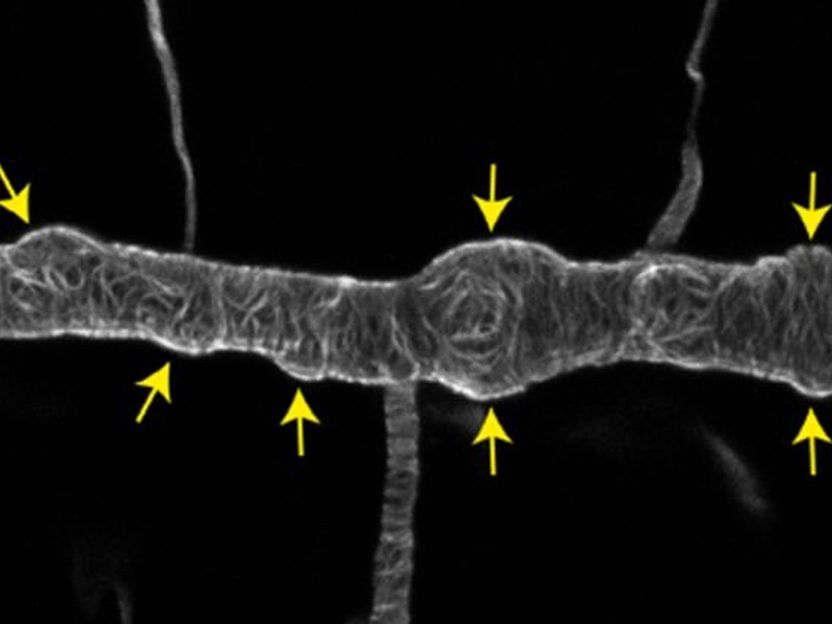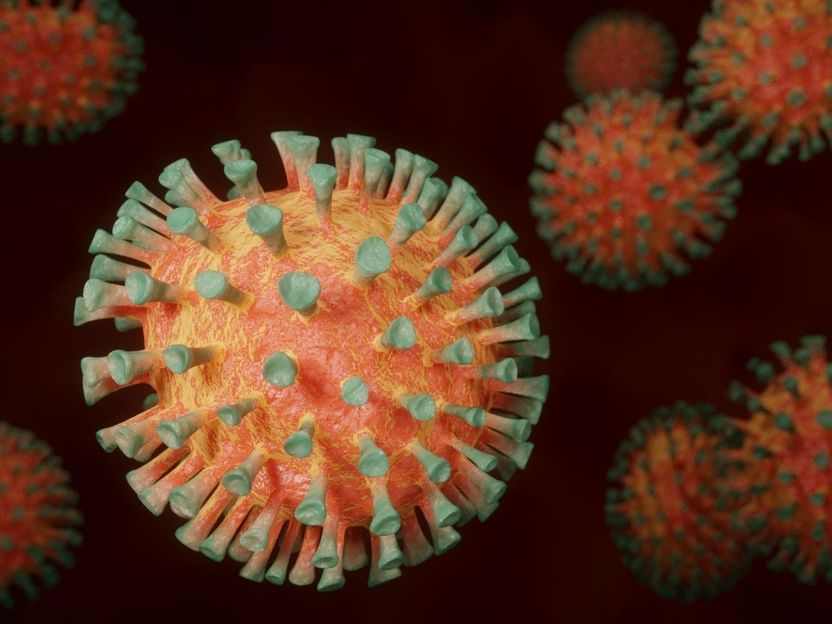Defect in fruit fly respiratory system may provide insights into human aortic aneurysms
A team of researchers led by Leipzig University has gained new insights into the respiratory system of fruit flies – the so-called tracheal system – which could be important for future research into aneurysms. Dr Matthias Behr from the Institute of Biology (Department of Cell Biology) at Leipzig University and his team, together with colleagues from the Max Planck Institute for Multidisciplinary Sciences in Göttingen, carried out genetic, cell biological and biochemical studies on Drosophila embryos.

Confocal light microscope image of the respiratory system of a Drosophila embryo. The yellow arrows point to unusual bulges in what should be a smooth tubular tracheal branch. These bulges can tear after a short time.
Foto: Leonard Drees, MPI
They found that the cells in the fruit fly’s tracheal system are connected to the extracellular matrix by the proteins Dumpy and Piopio. They have just published their research findings in the journal eLife.
Similar to the human circulatory system or lungs, the fruit fly’s tracheal system consists of a network of tubes. During the embryonic development of these insects, this network of tubes is filled with a special substance that gives them shape (an extracellular matrix), which is secreted by the surrounding cells. As the organs grow, the cells are closely connected to this extracellular matrix and “shimmy” along it to form the right shape and size of tubes.
The forces between the cells and the extracellular matrix shift during this time, for example due to strong cell growth. This could lead to deformation of the cell membranes because the overlying matrix cannot expand with them. When this happens, the protease Notopleural comes into play. This is an enzyme that cleaves proteins or peptides. The enzyme acts like a pair of scissors, cutting up the Piopio protein and breaking the cell-matrix bonds. “This trick avoids excessive tension and deformation of the cell membranes. If this does not happen, bumps and cracks form in the tube system and the fruit fly’s respiratory system does not function,” says Dr Matthias Behr, senior author of the study.
He explains that similar defects occur in the human circulatory system in the form of aortic aneurysms. Since the proteins that Behr and his colleagues have identified in their study in the fruit fly are also present in very similar form in humans, the mechanism described could support future research into the cause of aortic aneurysms and similar tubular diseases.
Original publication
Other news from the department science

Get the life science industry in your inbox
By submitting this form you agree that LUMITOS AG will send you the newsletter(s) selected above by email. Your data will not be passed on to third parties. Your data will be stored and processed in accordance with our data protection regulations. LUMITOS may contact you by email for the purpose of advertising or market and opinion surveys. You can revoke your consent at any time without giving reasons to LUMITOS AG, Ernst-Augustin-Str. 2, 12489 Berlin, Germany or by e-mail at revoke@lumitos.com with effect for the future. In addition, each email contains a link to unsubscribe from the corresponding newsletter.





















































